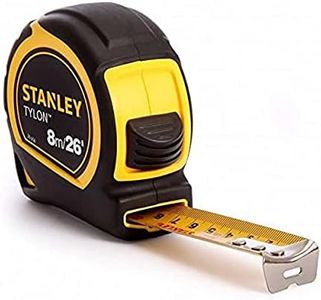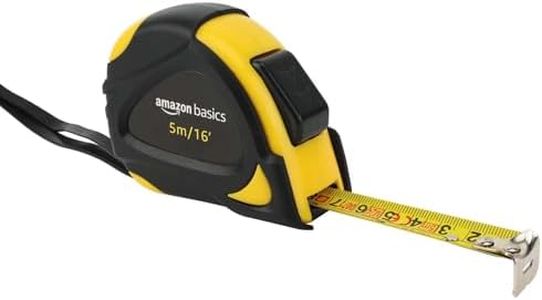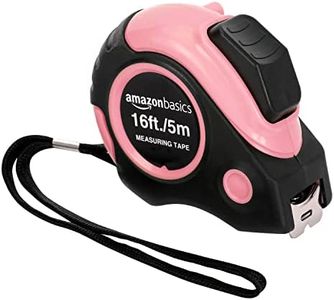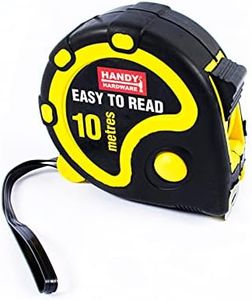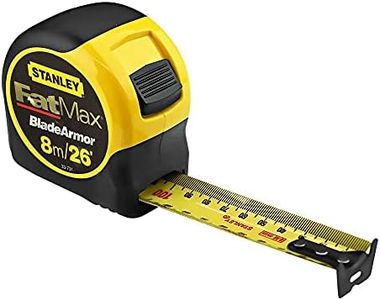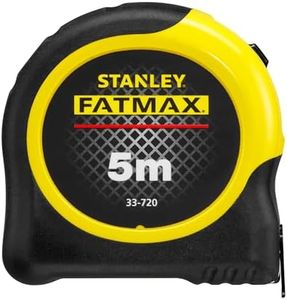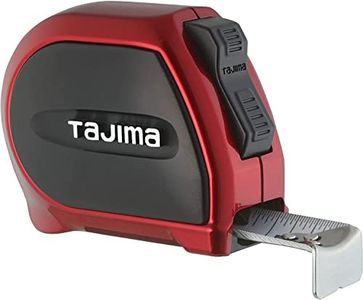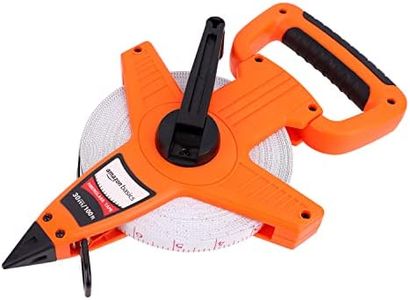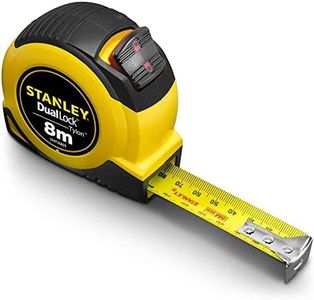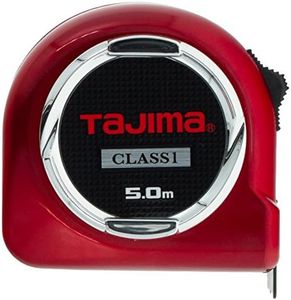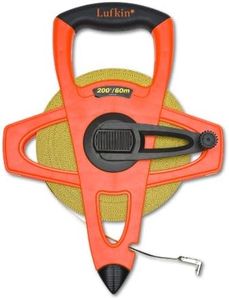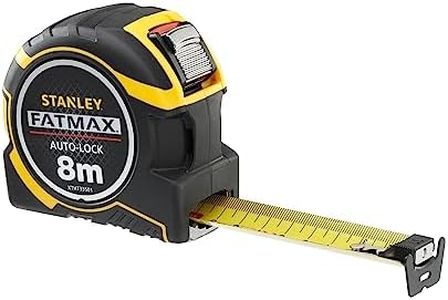We Use CookiesWe use cookies to enhance the security, performance,
functionality and for analytical and promotional activities. By continuing to browse this site you
are agreeing to our privacy policy
10 Best Tape Measures
From leading brands and best sellers available on the web.By clicking on a link to a third party's website, log data is shared with that third party.
Buying Guide for the Best Tape Measures
Tape measures are essential tools for anyone who regularly needs to take measurements, whether it’s for DIY projects, construction, crafts, sewing, or woodworking. Choosing the right tape measure makes your work easier and more accurate. When picking one, it pays to think about the kind of tasks you do most and how you’ll use the tape in practice. Focusing on key features can help you select a tape measure that fits your needs best.LengthThe length of a tape measure is how far the tape can be extended from its case. This is important because it determines what kind of objects or spaces you can measure without needing to reposition the tape. Tape measures commonly come in lengths like 3m, 5m, 8m, or even longer. Shorter tapes (2m-5m) are more compact and handy for quick indoor tasks, while longer tapes (8m-10m and above) are ideal for big projects like room layouts or outdoor jobs. Choose a length that covers your biggest common measurement needs, but don’t go unnecessarily long as that can make the tape bulkier and heavier.
Width and Sturdiness of the BladeThe blade is the actual measuring tape that pulls out. Its width affects its ability to stay rigid over long stretches without bending or collapsing, referred to as 'standout.' Wider blades (25mm and above) are more stable and useful if you often measure without help or need the tape to remain straight over longer distances. Narrower blades (16mm or so) make the tape lighter and easier to handle for shorter, simpler measurements. If you work alone or do a lot of one-handed measurements, go for a sturdier, wider blade.
Markings and UnitsTape measures come with various markings: metric (centimeters and millimeters), imperial (feet and inches), or both. Having both units is helpful if you work on projects requiring conversions or if you're in a country where both systems are common. Also, some tapes have extra markings for stud intervals or fractions. Make sure the markings are easy to read and fit your needs—opt for clear, bold print if your eyesight isn’t perfect, or if you often work in dim light.
Housing and DurabilityThe housing is the outer case of the tape measure. Durability here matters, especially if you’ll be using it on hectic sites or in rough environments. Look for materials like rugged plastic or even rubberized coatings, which help protect the tape from drops and wear. Compact housings are easier to carry, while heavier-duty ones are built to last and can endure being tossed in a toolbox or dropped occasionally. Pick robustness according to where and how you’ll use the tape.
Locking MechanismA lock stops the blade from retracting so you can easily note down your measurements. The quality and feel of the lock make a difference—smooth, reliable locks make measuring faster and less frustrating, while poor locks can cause the blade to slip back at the worst time. If you take lots of measurements or often work solo, prioritize tapes with a strong, easy-to-use locking mechanism.
Hook and Magnetic TipThe end hook grabs onto edges so you can reliably take measurements by yourself. Some hooks are slightly oversized or contain magnets, which help them stick to metal surfaces for hands-free measuring. Magnetic tips are a big advantage for those working with metalwork or in construction. Look for a hook that’s firmly attached and moves a little (for accuracy), and pick a magnetic option if you regularly work with metal surfaces.
